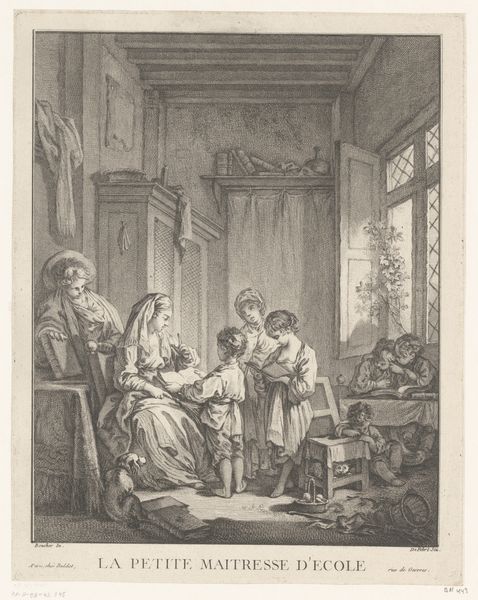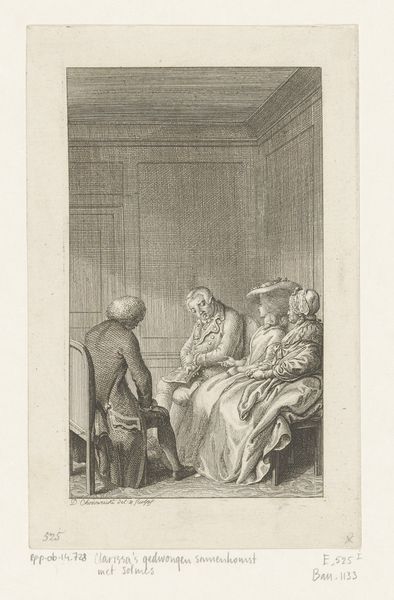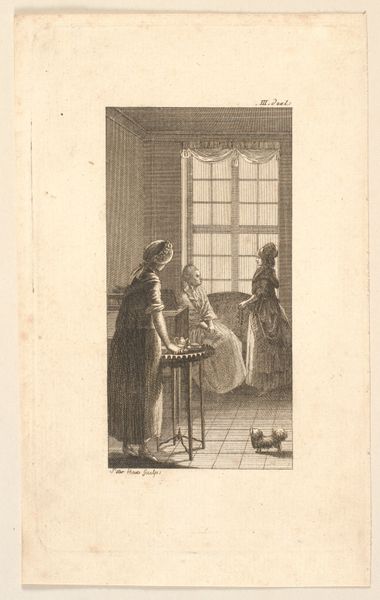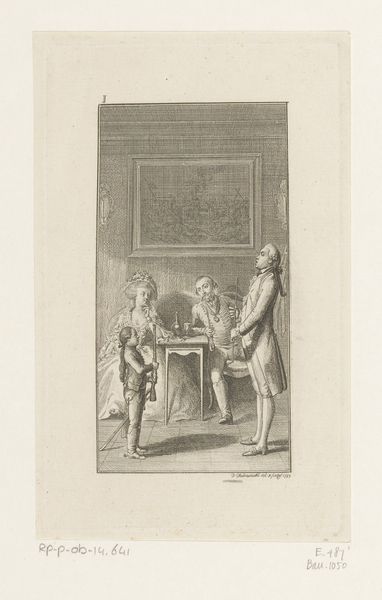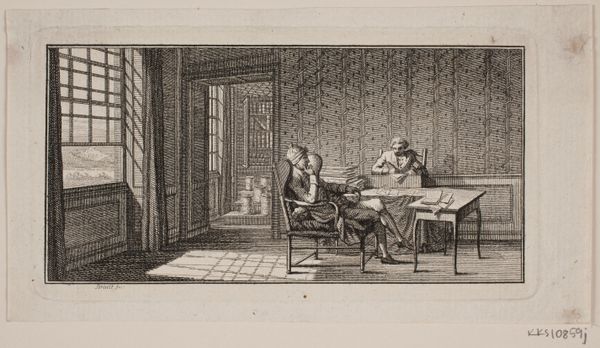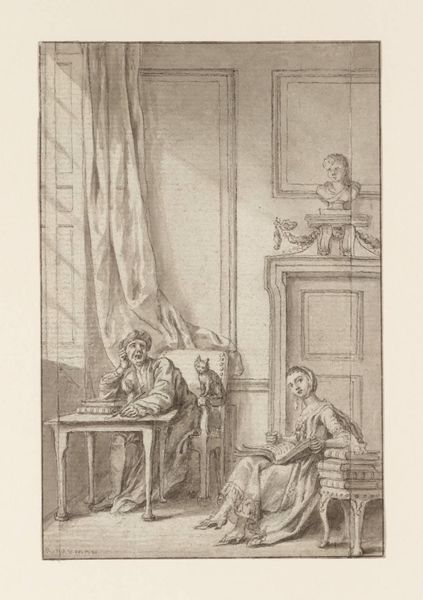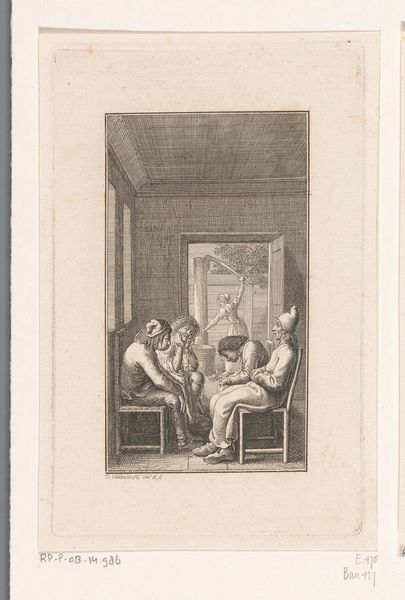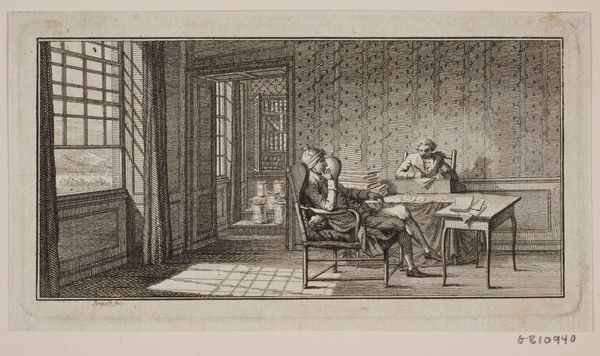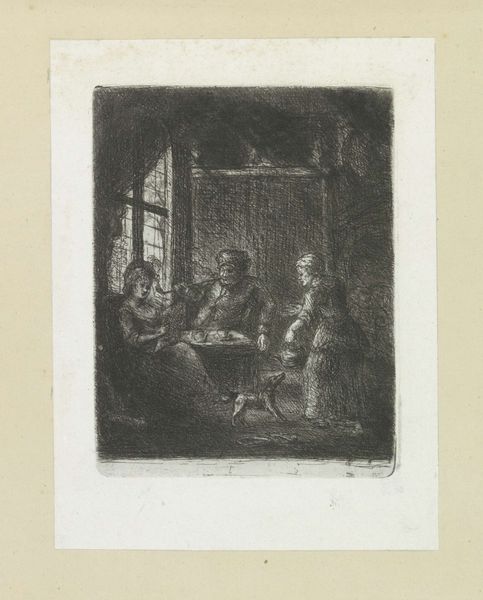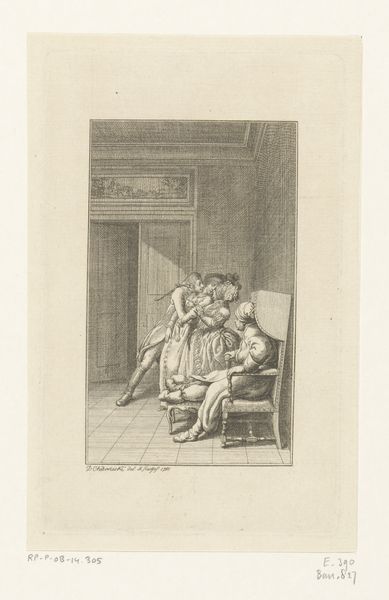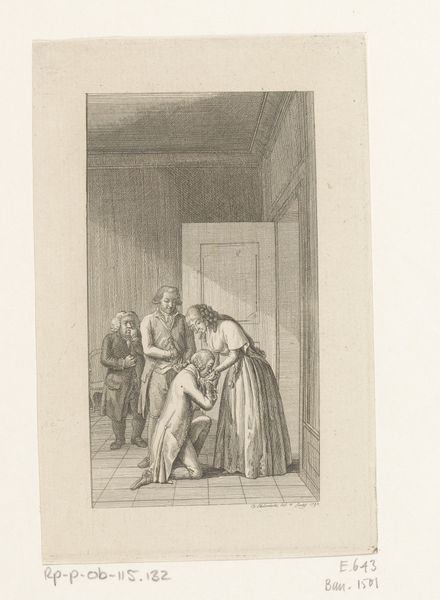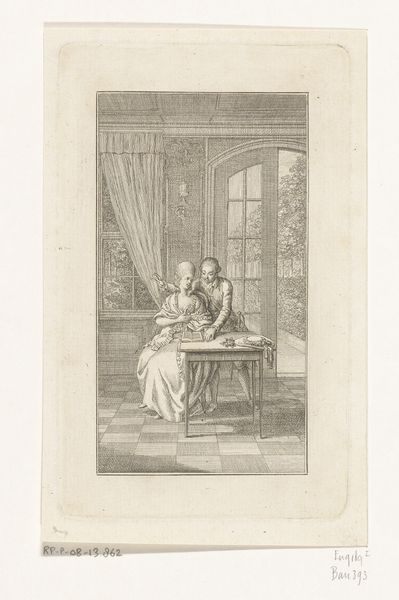
Dimensions: height 162 mm, width 104 mm
Copyright: Rijks Museum: Open Domain
Daniel Nikolaus Chodowiecki made this etching, 'Harlequin with folded arms next to his wife', in the late 18th century. Here, Chodowiecki offers us a glimpse into the private lives of actors, specifically a male performer in the commedia dell'arte tradition. Commedia dell'arte emerged in 16th-century Italy and quickly spread throughout Europe. These travelling troupes relied on improvisation and stock characters, such as Harlequin, to entertain audiences with satire and wit. By the 1700s, going to the theatre became an increasingly public and institutionalised form of social activity, governed by social hierarchies. This etching not only acknowledges the significance of theatre but also subtly comments on the social structures of its time. The contrast between the public and private lives of performers and between the freedom of the commedia dell’arte and the rigid social norms of the era are thrown into relief. To delve deeper into the context of this work, explore theatre history archives, costume design resources, and social histories of 18th-century Europe to appreciate the full richness of Chodowiecki's subtle commentary on the world around him.
Comments
No comments
Be the first to comment and join the conversation on the ultimate creative platform.
